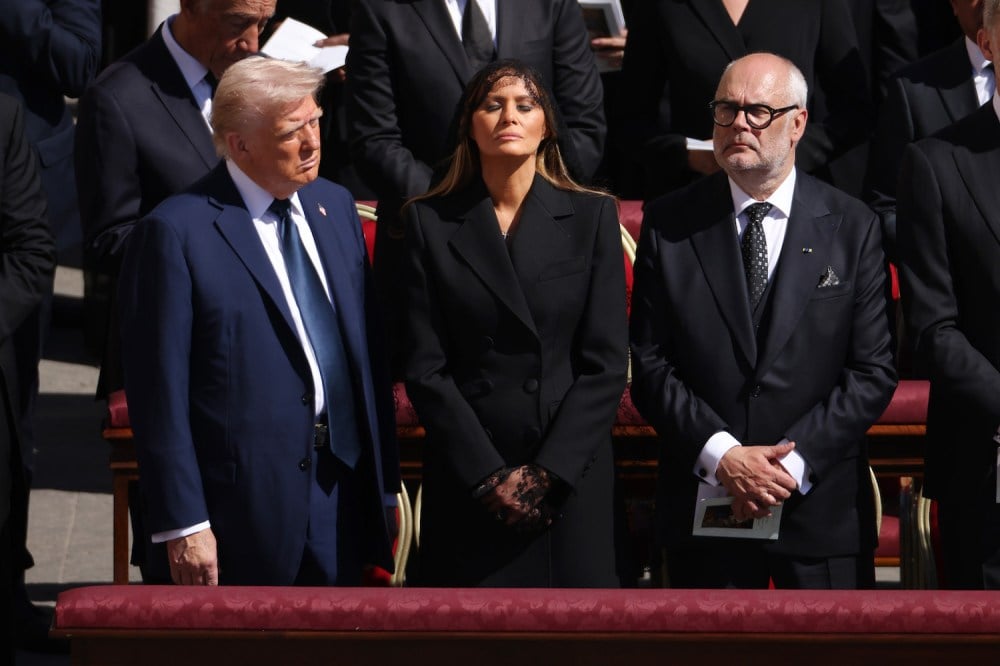When Estonian President Alar Karis found himself sitting with U.S. President Donald Trump during Pope Francis’s funeral at the Vatican earlier this year, the Russia-Ukraine war and Trump’s efforts to end it were a natural topic of conversation.
“It was in April, and he said: ‘We are close to peace, we are close to the end of the war,’” Karis recounted during an interview with Foreign Policy in New York on Oct. 24. “Now, it’s October.”
The Estonian leader was echoing a reality that Trump himself has recognized: Negotiating an end to the Russia-Ukraine war is not as simple as the “24 hours” that Trump had boasted he would need to do so once elected to the White House. Early on, Trump berated Ukrainian President Volodymyr Zelensky and courted Russian President Vladimir Putin, but he has increasingly flipped to the other side in recent months, particularly as he’s grown frustrated with Putin’s continued assault on Ukraine and intransigence in negotiations.
“If I talk to you and you promise me something and then nothing happens, then you come again, promise me, and nothing happens, at some point you get fed up,” Karis said.
Trump’s frustration has hit enough of a breaking point for him to finally take concrete action against Putin. The Trump administration imposed sanctions on two of Russia’s biggest oil companies last week—the first U.S. sanctions on Russia since Trump returned to office—putting pressure on the Russian energy sector that funds much of its war in Ukraine.
“Putin doesn’t want to sit behind the negotiating table, and he doesn’t want peace,” Karis said. “More sanctions, more support to Ukraine, this is the only way, unfortunately … of course, Russia is huge, and even these sanctions probably won’t work overnight. But you see the economy is going down in Russia, and it should have some kind of effect.”
Estonia has a greater understanding than most countries of the threat from Moscow’s leadership. The small Baltic nation, which was part of the Soviet Union until it became independent in 1991, shares a roughly 200-mile border with Russia. That border was breached as recently as last month, when three Russian fighter jets entered Estonian airspace for 12 minutes—the most egregious in a series of Russian incursions into NATO countries, which also included drone encounters over Poland, Latvia, Lithuania, Romania, Finland, and Norway. Lithuania closed its border with Belarus, a Russian ally, after suspected Belarussian balloons shut down one of its main airports.
Karis said that Estonia has faced more than 80 such incursions by Russia over the past two decades, which he said are aimed at “testing what NATO is doing, what a particular country is doing—they have been doing it all the time, of course, but now it has been intensified.”
Given how quickly NATO jets were scrambled in Estonia and other countries to escort Russian jets out or take down their drones, Karis feels the trans-Atlantic alliance rose to the challenge. “We reacted properly … NATO jets did their job,” he said. “I think the message they should take away is: Don’t mess with us.”
Trump’s commitment to NATO hasn’t always been watertight, with the U.S. president frequently—particularly in his first term —complaining about how much the United States spends on the alliance and pushing its European members to take on more of the burden for their own defense. Trump did reiterate U.S. support for NATO during a recent summit at The Hague in June, mollified in part by a pledge by all its member countries to increase defense spending to 5 percent of their GDP by 2035.
Estonia, currently around 3 percent, is on track to hit 5.4 percent next year, according to Karis. The country is making significant investments in shoring up its defense industrial base, particularly its drone industry and AI. It helps that the country is one of the most digitally advanced economies with near-universal internet adoption. “Our people are used to digitalization and use all of these technologies,” Karis said, adding that Estonia and other countries have been learning from Ukraine while helping it fight. “Drones are becoming more important than old-fashioned military equipment like tanks and vessels,” he said.
Karis is also realistic about Estonia’s size and capability, however. “Five percent for us is five percent,” he said. “But if you look at the real numbers, the numbers are rather small, and military equipment does cost the same whether Germany buys or whether we buy—so it’s very expensive, that’s why we need alliances.”
The question then is to what degree that alliance can remain dependent on U.S. support—or survive without it. The U.S. Defense Department is already removing some U.S. troops from Europe, and Karis warned last month that European countries should prepare for such an eventuality. But U.S. forces remain an important deterrent to Russia in the region, he said, and Europeans don’t want to build “a parallel institution” when NATO exists.
“Of course, if the U.S. takes away all these military capabilities from Europe, let’s say, tomorrow, then there might be a problem, but there’s also a promise that it’s not going to happen,” he said. “I know the U.S. is probably going to take away one brigade or something, but Europe is building up its capability and then the U.S. can take away some of its forces. We have to collaborate together, and the U.S. is not the enemy to Europe,” he added.
And what about Estonia? Can the country manage without the security assistance that the United States is reportedly preparing to wind down next year? (Trump did say about a month ago that he would defend Estonia and other Baltic nations if Russia stepped up its aggression.)
“I don’t think so,” Karis said, before launching into a brief history lesson. “We had a very good army before the Second World War—very well equipped, very well trained,” he said. “But we didn’t have friends. That means everybody was busy in Europe with new security issues, so that’s why the Soviet Union occupied us. So that means only a good army for a small country is not enough. You need friends.”
The post ‘Putin Doesn’t Want Peace’ appeared first on Foreign Policy.




